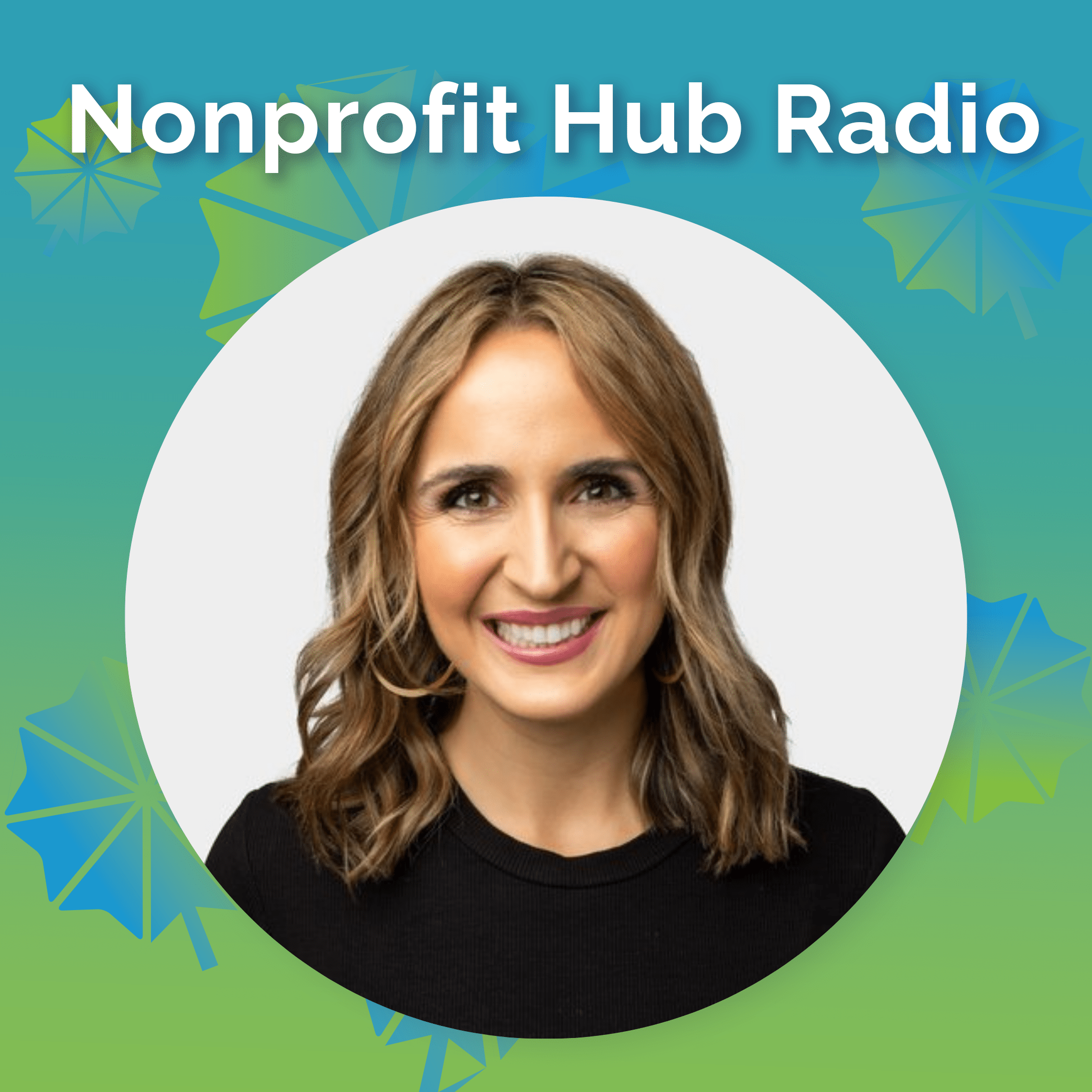Taylor Corrado is a guest contributor for Nonprofit Hub, and is the Nonprofit Marketing Manager at HubSpot and has worked in the nonprofit space for several years, starting as a marketer (and HubSpot customer) at the online fundraising company, FirstGiving.
_____________
To be a nonprofit organization practicing inbound marketing, you must be using content to spread awareness of your cause, attract new constituents, and bring back past supporters. This content should help you connect with your audience on a personal level, encourage them to support your organization, and spread your mission within their own network of friends, family and colleagues.
One of the best ways to engage your audience is to show the impact of their support of your organization. This is how you get a potential or current donor truly understanding not only what problem your cause solves, but how their actions—small or large—contribute to the solution. Thing is, that kind of stuff can often be hard to articulate. So how can you use content to communicate your mission, and the tremendous impact of your donors’ support? Glad you asked. Here are some solid, accessible ways you can do just that in your nonprofit marketing materials.
Tell Personal Stories Through Video
Video can be a very power piece of content, and can go viral in a matter of minutes (who remembers Kony 2012?). But the most powerful videos connect the viewer emotionally to the story being told. Charity: water is a fantastic example of an organization using video to communicate mission and donation impact. If you’d like, you can view their touching, inspiring video of the 9-year-old Rachel Beckwith, a fundraiser who was tragically killed in a car accident before she reached her fundraising goal. Her story sparked thousands of individuals across the world to donate to her fundraising page in her honor, raising over $1.2 million dollars. The video has over 56,000 views on YouTube, and continues to inspire individuals to give years after Rachel started her initial campaign.
So you might be saying to yourself, “That sounds wonderful, but we don’t have a huge video production team to make videos like charity: water.” Actually, neither does charity: water. They have one individual who produces, shoots, and edits all of their videos. So don’t hesitate to tap into your staff or volunteer pool and find out if anyone has a camera, a microphone, a computer, and some video and editing abilities. In this digital age of ours, someone in your network usually has the basic skills to create a short, compelling video. And don’t be afraid to use Vine on Twitter or Instagram’s video feature to record and share shorter videos. All you need to start is the story.
Here are some ideas for your next (or first!) nonprofit video:
-
Highlight a volunteer that has been with your organization for more than a year. Interview them about why they support your mission and what their connection is to your organization.
-
Set up a video recording station at your next event and have attendees answer one specific question, such as “Why do you give?” or “Why do you run?”. Have the individuals upload the video to their Facebook wall or email it to their friends and family and have them ask their network to donate. This can be done simply with a webcam and a laptop (no fancy equipment needed).
-
Create a longer, 10-minute video to highlight your organization’s achievement from the previous year—but center it around volunteer and donor activities. Include what you plan to do to reach this year’s goals and how viewers can donate, volunteer, participate in events, or even join your organization’s staff.
Share Stories on Your Blog
Blogging is the single most effective way to increase your organization’s credibility online, easily share your stories, and highlight individual constituents. To continue with charity: water as an example, they do an excellent job of highlighting their fundraisers in their “Updates” segment on their blog. Cubby Graham did a unique online fundraiser and challenged people to give a donation as a vote to either “Shave it” or “Save it” his beard, for instance:
Blogging also helps you rank higher in search engines for terms related to your mission. Don’t have a blog? Start one. You’re the expert on your mission and organization, so why not write about it and educate your audience?
If you do already have a blog (good job!) but are struggling to write enough content or just can’t seem to think of new topics to write about, this is a perfect opportunity to engage your constituents by asking them to contribute as guest bloggers. Have them tell their story of working with and supporting your organization, what their personal connection is to your cause, or even what tips they have to help donors raise money or inspire others to contribute. This is great to do right after a fundraising event in which people are feeling particularly inspired; they can then tap into the ideas and feelings they had after talking to other supporters, and more clearly communicate their thoughts to a wider audience via your blog.
CauseVox launched a new set of online fundraising tools earlier this year, including a content fundraising tool that allows individual fundraisers to share their stories to drive donations, increase engagement, and improve SEO on their personal fundraising pages. This is a great way for your organization to make your supporter’s stories your stories.
Tie Donor Actions to Numbers
Closing the loop from someone making a donation, to explaining how it impacts the mission directly, is sometimes made easier with numbers. Hey, everybody understands dollars and cents. This is easier for organizations that solicit monetary donations, but if your nonprofit solicits goods? Take a cue from Nothing by Nets, which brings donations to life by showing the impact of an item
.
This visual ties a donation directly to one mosquito net for one child, showing how a $10 donation can have a huge impact on one individual’s life by allowing them to purchase one net. If your mission doesn’t have physical attributes, tie the donation amount to what it means for the mission in terms of progress. Showing the impact of a constituent’s support is key to getting them to come back and give again, as well as encourage others within their personal network to give—think how much easier it is for volunteers to raise money from friends, family and colleagues if they have these raw numbers to point to.
The more visual you can make this, by the way, the better. Visual content is simply easier for people to consume quickly, and it stands out amid a sea of words that, frankly, most people would rather scan over. Infographics are a hot commodity and just one fantastic way to present numbers—if you’re intimidated at the notion of creating them, don’t worry, you can simply create them in PowerPoint!
Turn Donors Into Advocates With Nurturing Emails
Most organizations prefer other people to evangelize for them. Why? Because 1) it’s more efficient in terms of resources, and 2) the source is more credible. That means you have a huge opportunity to communicate your organization’s mission and impact if you’re enabling donors to become more than just a one-time giver—you should be nurturing them into advocates! And you can do that efficiently using email nurturing tools.
When an individual makes their first donation online, send your standard donation receipt, your heartfelt thank you, but then follow up with them via email the next day or so with some content that enables them to communicate your mission with others. Send them information on how they can volunteer for your organization, start a fundraiser themselves, or how they can become an activist for your cause. Over the next few weeks, email them with materials that contain short tips to make them a successful advocate for your mission. This doesn’t have to be expensive t-shirts or fancy posters, it can simply be an image for them to tweet or post on their Facebook wall to spread awareness to their personal network. You can also send them three email templates with suggested copy for them to send to their colleagues, friends, and family, asking them to donate to your mission, as well.
Retaining constituents should be one of your top organizational priorities. The longer someone is engaged with your organization, the higher their contributions become and the deeper their connection is to your mission. You organization becomes part of their day-to-day activities and in many cases, part of their family. Use your email tools to share what you know with those that are willing to give to and support your cause.
Revamp Your Annual Report
Your organization puts out an annual report each year, but how many of your constituents actually read it? I would guess not that many. But the content in that report is relevant to your audience and is rich with social proof and data on the impact of your mission. So why not make it beautiful, shareable and accessible to your audience? Why not make it stand out among all the other annual reports released by nonprofit organizations? That’s what charity: water does for every annual report—it’s visual, interesting and easily digestible.
Consider ways you can think outside of the box with your next annual report, calling out the data and stories that really communicate the impact of your mission and your constituents’ contributions. And when that report is released, be sure to leverage all your marketing channels—blog, email, social media—to promote that fantastic piece of content!
How else do you use content to demonstrate the impact of your supporters’ actions?
Image credit: Jon Ashcroft
_____________
Taylor Corrado is the Nonprofit Marketing Manager at HubSpot and has worked in the nonprofit space for several years, starting as a marketer (and HubSpot customer) at the online fundraising company, FirstGiving. There, she educated nonprofits on the benefits of peer-to-peer fundraising online. She’s bringing all her knowledge of marketing to organizations big and small. She can not think of having a career where she is not helping others in some way.






